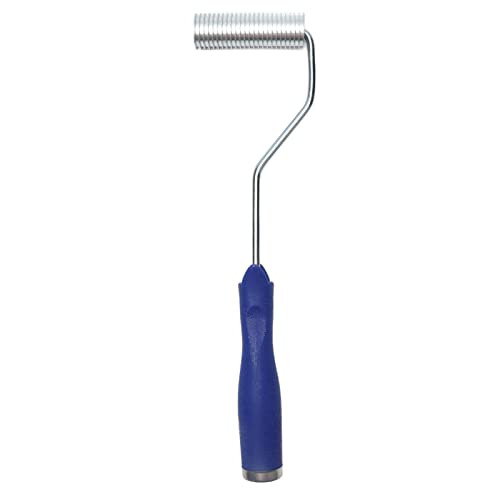Rust:
Putting a wet rag and soaking the key in evaposust will remove the rust easily without damage- it is non-acidic.
Better and easier- Seeing how its just very little if it were mine I would just use some metal prep like "Kleen-Strip concrete and metal prep-
It has phosphoric acid some additives that strip the rust änd some of the iron molecules in the surface to reduce rust.
It leaves a little iron phosphate in the pores. a little brush and some paper towels is all you need. it is acid so rinse or just wipe dry when done.
Not needed but going the extra mile.
Pump Impeller lubrication when installing:
When installing the pump impeller I would put a thin minimal layer of thin silicone grease on the impeller rubber sides and tips (or just a thin layer over all the the rubber.) You could put a thin layer on the cavity body walls. A good chpoice would be dielectric silicone grease for spark plug boots.
Most auto stores sell tiny packets cheap by checkout as an adder, its cheap enough for a tube anyway and norrmally used in spark plug and coil on plug boots. It will prevent the impeller from sticking and lubricate on ititial startup. yes best to have all the tips in the right direction.
Shaft, key and impeller bore rust precention for easy disasembly later:
For the splines and shaft use thicker waterproof grease (not for lubrication) so trailer grease is not good- use plain silicone.
Danco waterproof grease for plumbing is good- a little tube of #80360 is cheap and will work good. Try not to get on impellers sides because it is thick, even though it is compatable. Detail: i would smear a little on shaft and key-and put a good amount in impeller bore, put impeller in, Push any excess or add more Danco to fill any spline or keyway spaces, then wipe off excess from the impeller rubber and put a little of the thin silicone greease on the exposed rubber side of impeller. I know super detailed but thats gong to the max!
Sealing water pump:
I prefer to seal water pumps and thermostats with Hylomar Blue or Elring Curil T non-hardening sealant. Seals good and easy to disassemble.
It will seal water and coolant and is easy to clean off or thin with a little laquer thinner. a thin layer rubbed across the sealing surface will be enough.
If the bolts go through to water on the back they should have a sealant on the threads, if they go in a "blind"hole then just a little hylomar under the head of a bolt and between head and washer will seal it- just be careful as it can reduce the torque needed slippery like grease when torquing. So dont overtorque.
Those sealants are amazing - made to go between machined surfaces- used in jet engines and I used on Porsches and VW cases and rotary engines.
(I learned about Curil from the Porsche race motors) It is easy to diassemble and if you have to do an emergency impeller replacement might even be able to be"re-smeared"" with your finger if there is a little left- especially if there is a tiny but on the outside. When I put on thermostat gaskets they come right out and usualy can reuse gasket and reseal without adding more!
Hope that helps some of you out there- let me know!























































